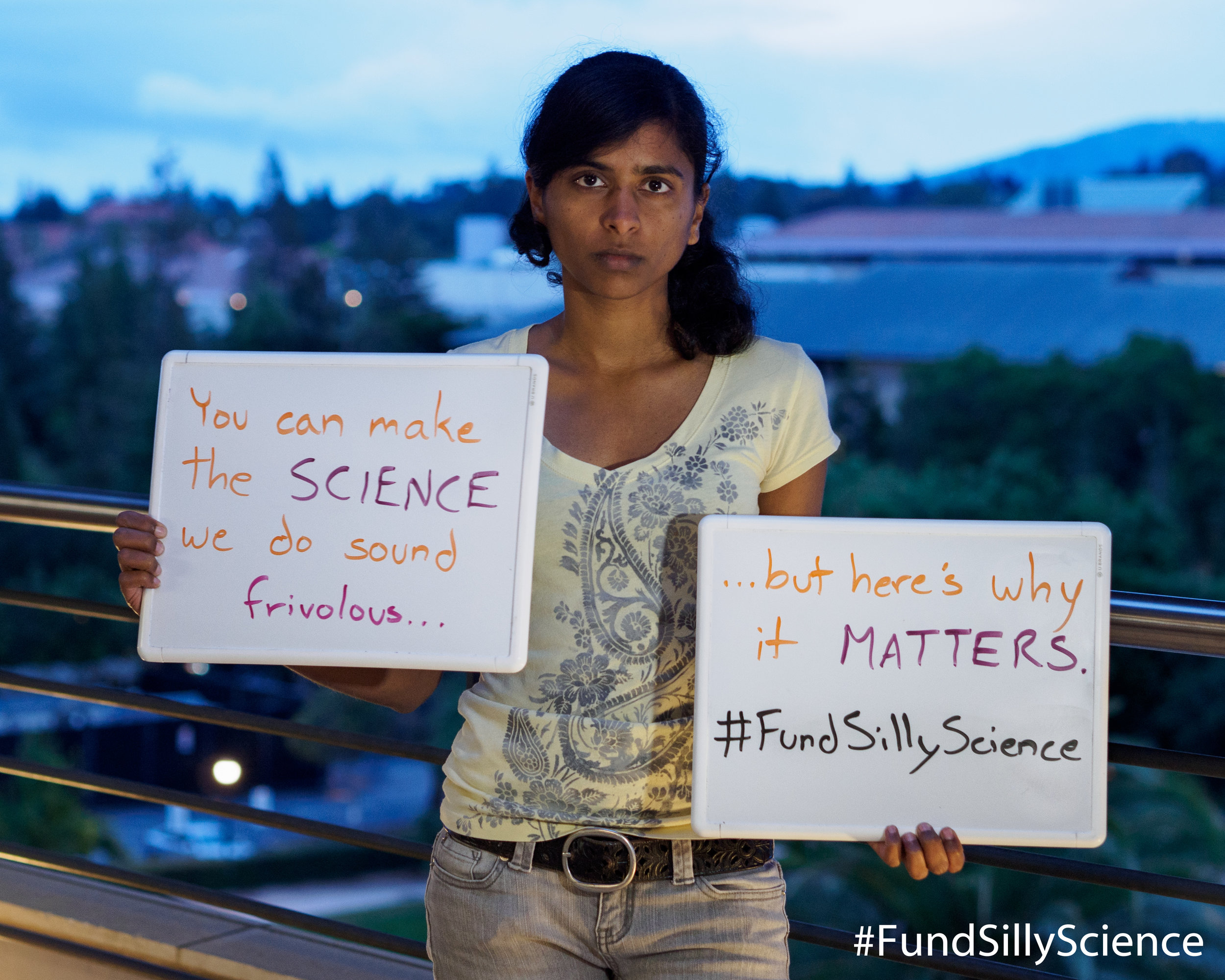
The science we do is often written off as frivolous by politicians. But silly-sounding science is done for good reasons. We do it because it helps us understand our world and our bodies, and improves our lives. Click or scroll through our photo series to see how “silly” science can have profound implications.

This is Kendra, a grad student at Stanford. “After a stroke, people and animals can lose the ability to move normally. We teach mice to run on a beam so that we can measure loss of ability after a stroke, and how different treatments can improve their recovery.”
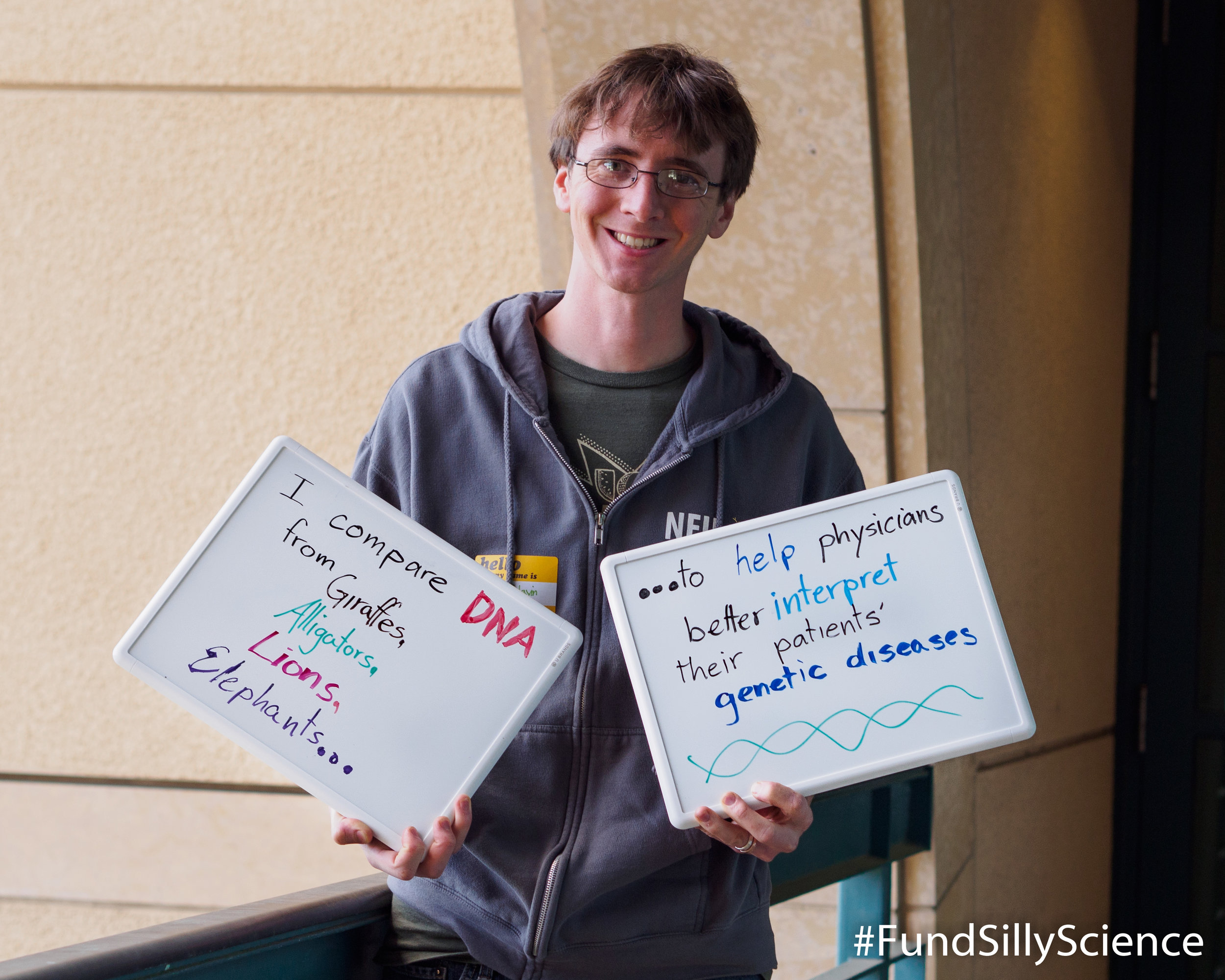
This is Alexandre, a PhD alum from Stanford: “Many genes are similar between diverse species, from germs to giraffes to humans. By analyzing how genes change over millions of years of evolution, we can better predict which mutations in human DNA are likely to cause genetic diseases.”
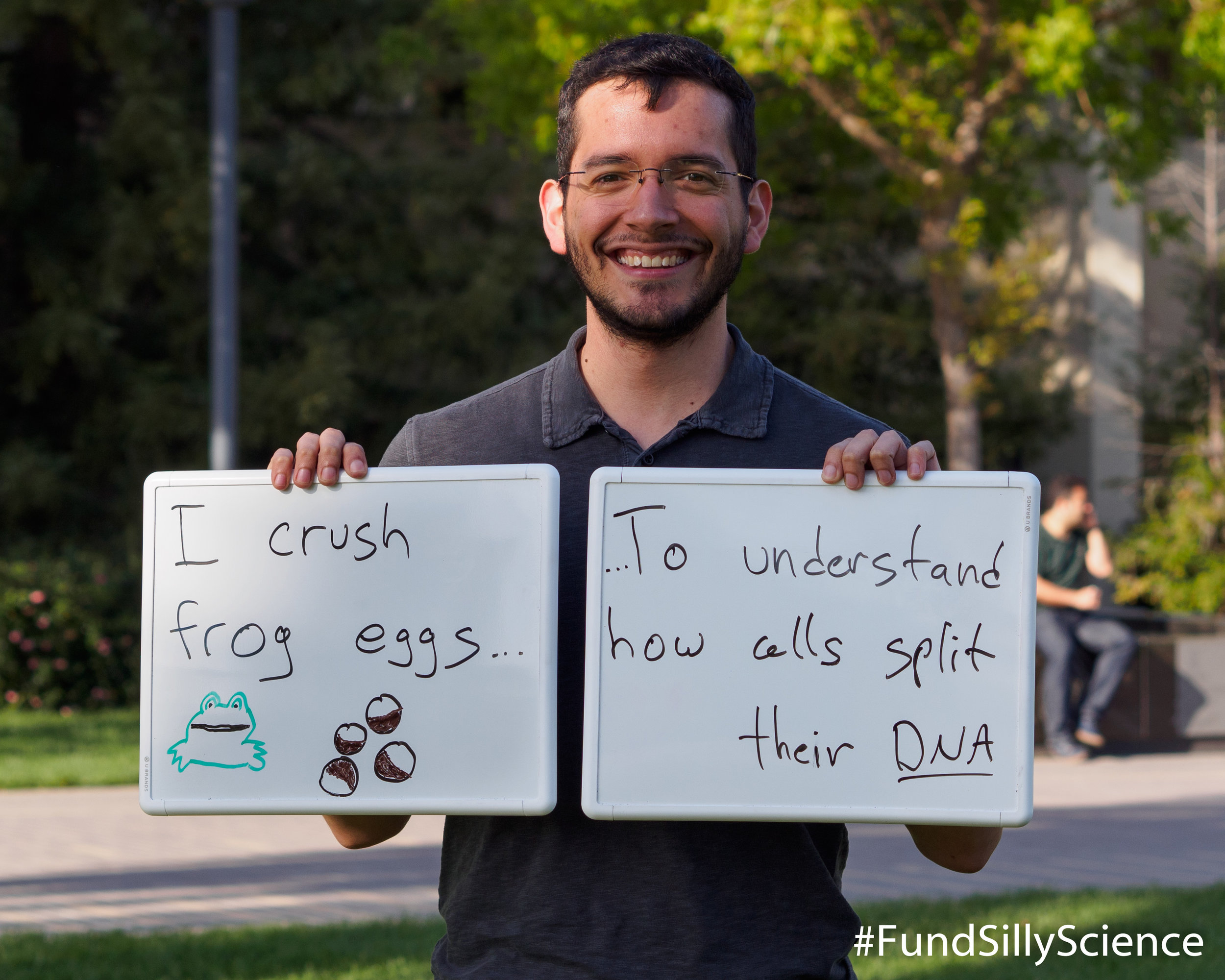
This is Julio, a graduate student at Stanford: “One of the goals of cell division is to replicate DNA and split it equally between the daughter cells. Frog eggs contain all the materials needed to imitate cell division in a test tube if we just add some DNA. I crush frog eggs so we can put those materials together with different forms of DNA to better understand how cells ensure proper distribution of DNA during cell division.”

This is Melissa, a PhD alum from UC San Diego. “Currently, there are no drugs to treat meth addiction. It is important to understand what happens in the brain during relapse to develop better treatments for drug addiction.”
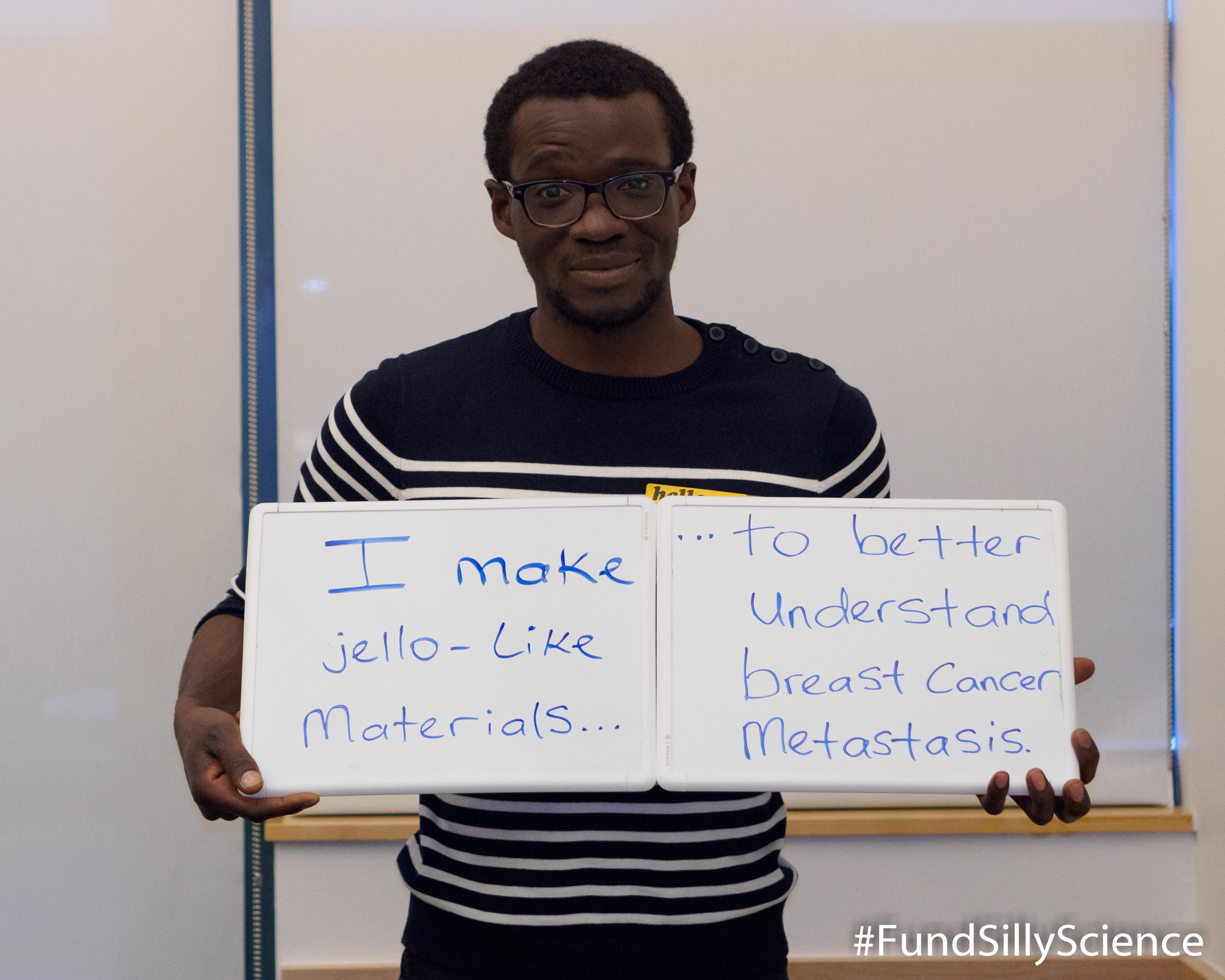
This is Kolade, a graduate student at Stanford. “90% of cancer deaths are due to metastasis. The mechanical properties of breast tumor environments are surprisingly similar to Jello. We use our materials to understand how cancer cells move through their environment.”
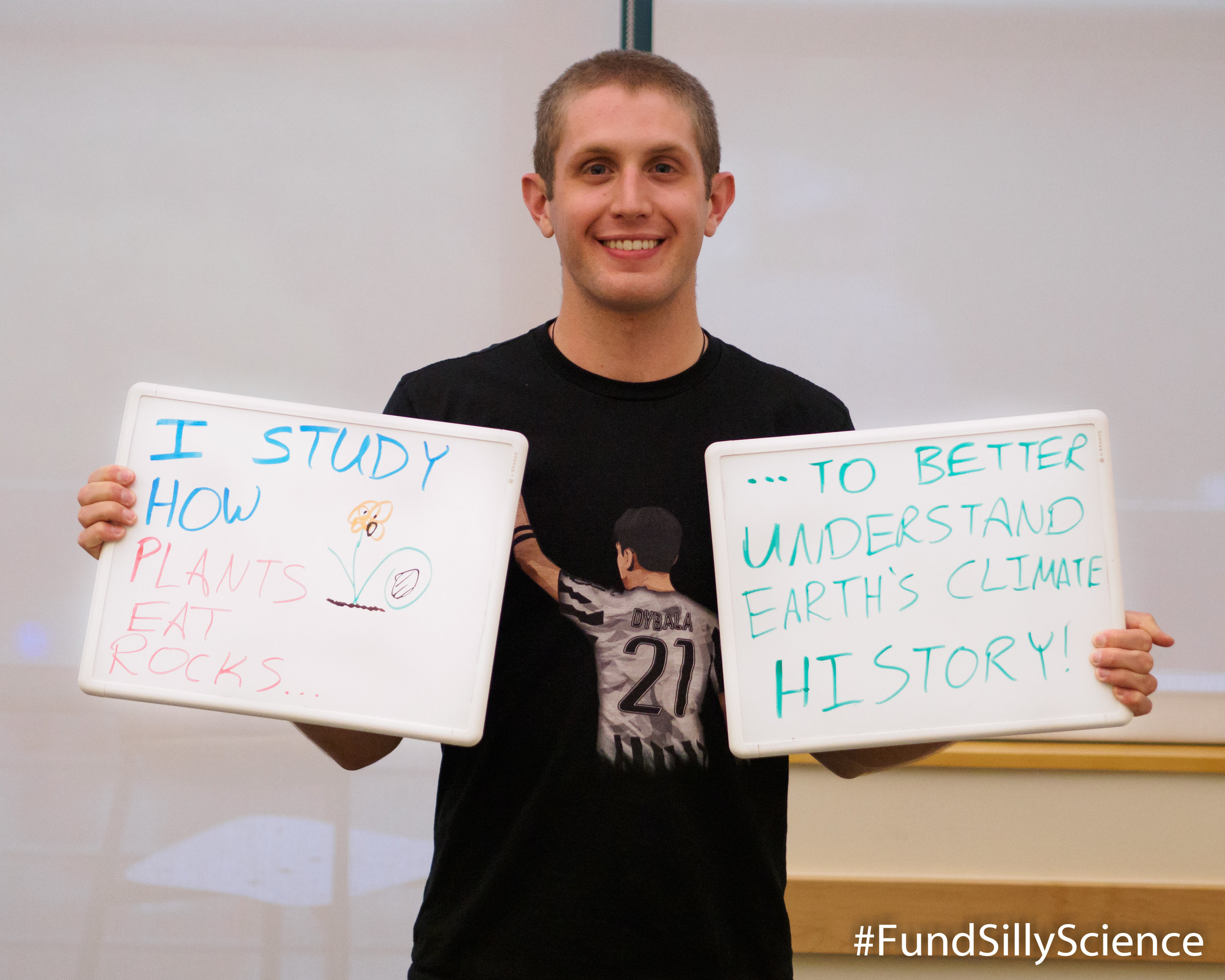
This is Mike, a current grad student at Stanford: “When silicate rocks break down, they react with carbon dioxide, and their products end up buried in the ocean as limestone. Plants break down rocks to access phosphorous for growth; this helps regulate the level of carbon dioxide in the atmosphere on long time scales!”
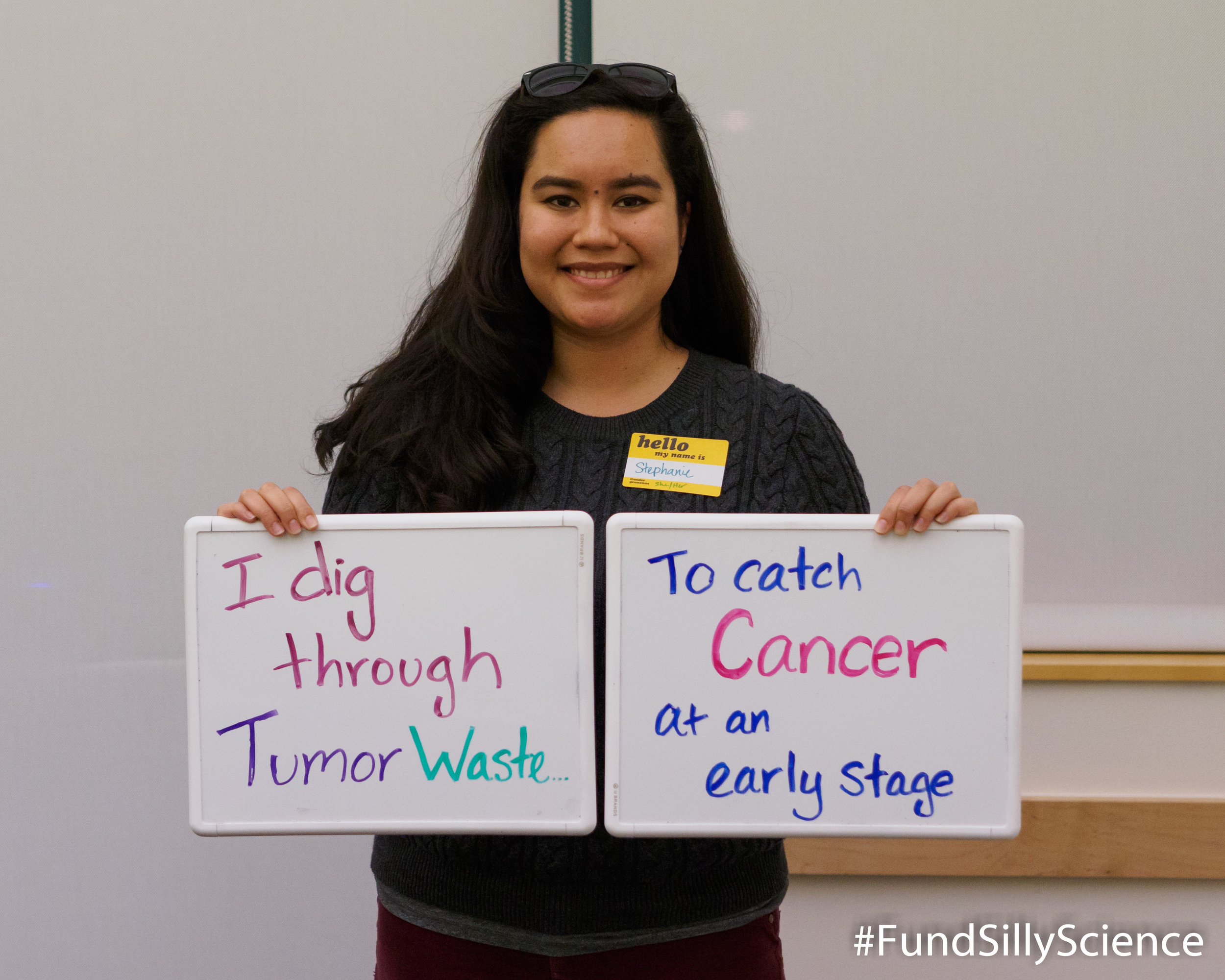
This is Stephanie, a research associate at Stanford. “Tumors shed DNA in the blood. We can extract that DNA, decode its sequence and create a profile specific to any type of cancer.”
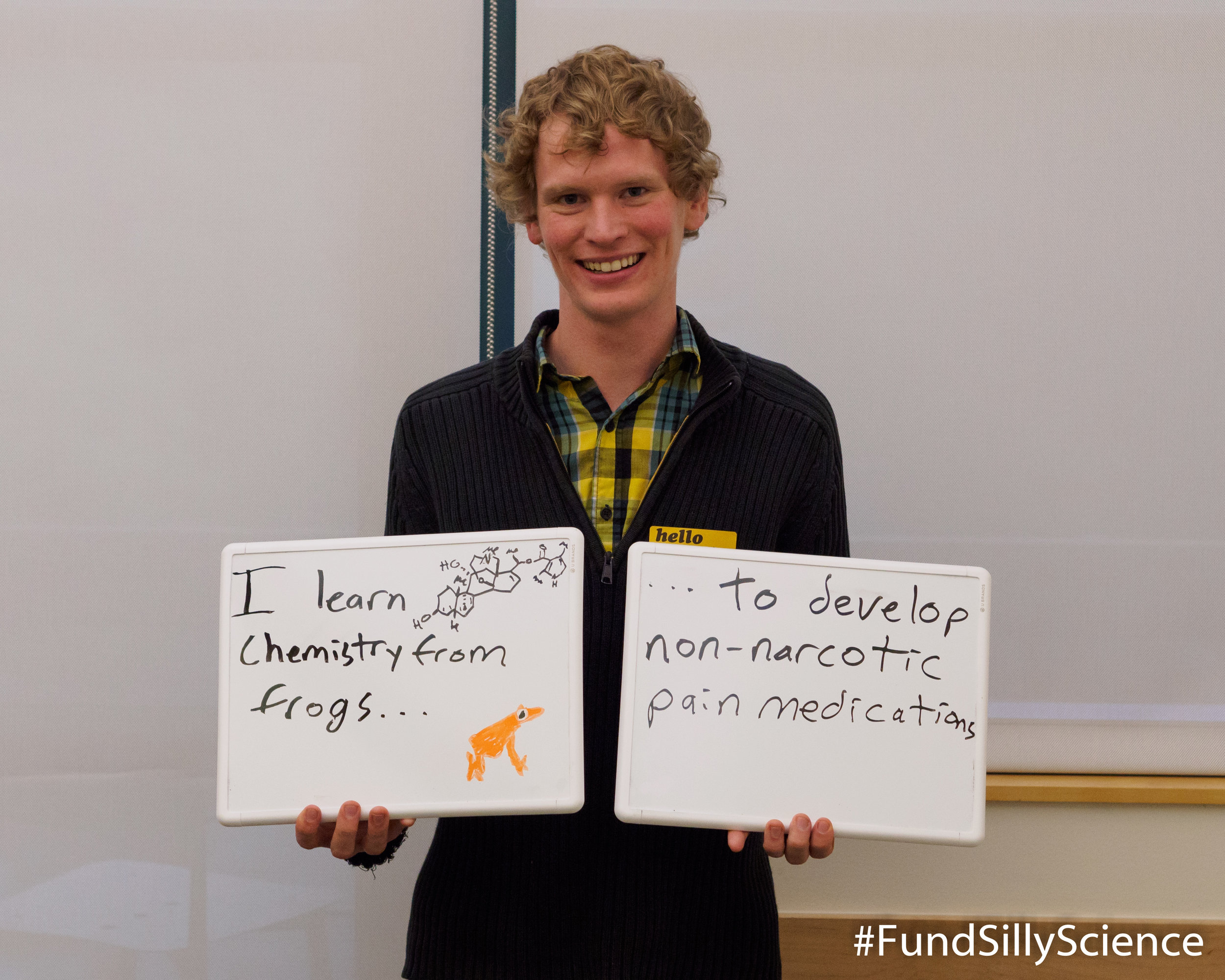
This is Tim, a graduate student at Stanford. “Batrachotoxin, isolated from Colombian poison dart frogs, is a potent neurotoxin that acts on the protein involved in electrical signalling and pain sensation in the body. We can synthesize it and use it to study how pain is transmitted, which can help us design new pain medications.”
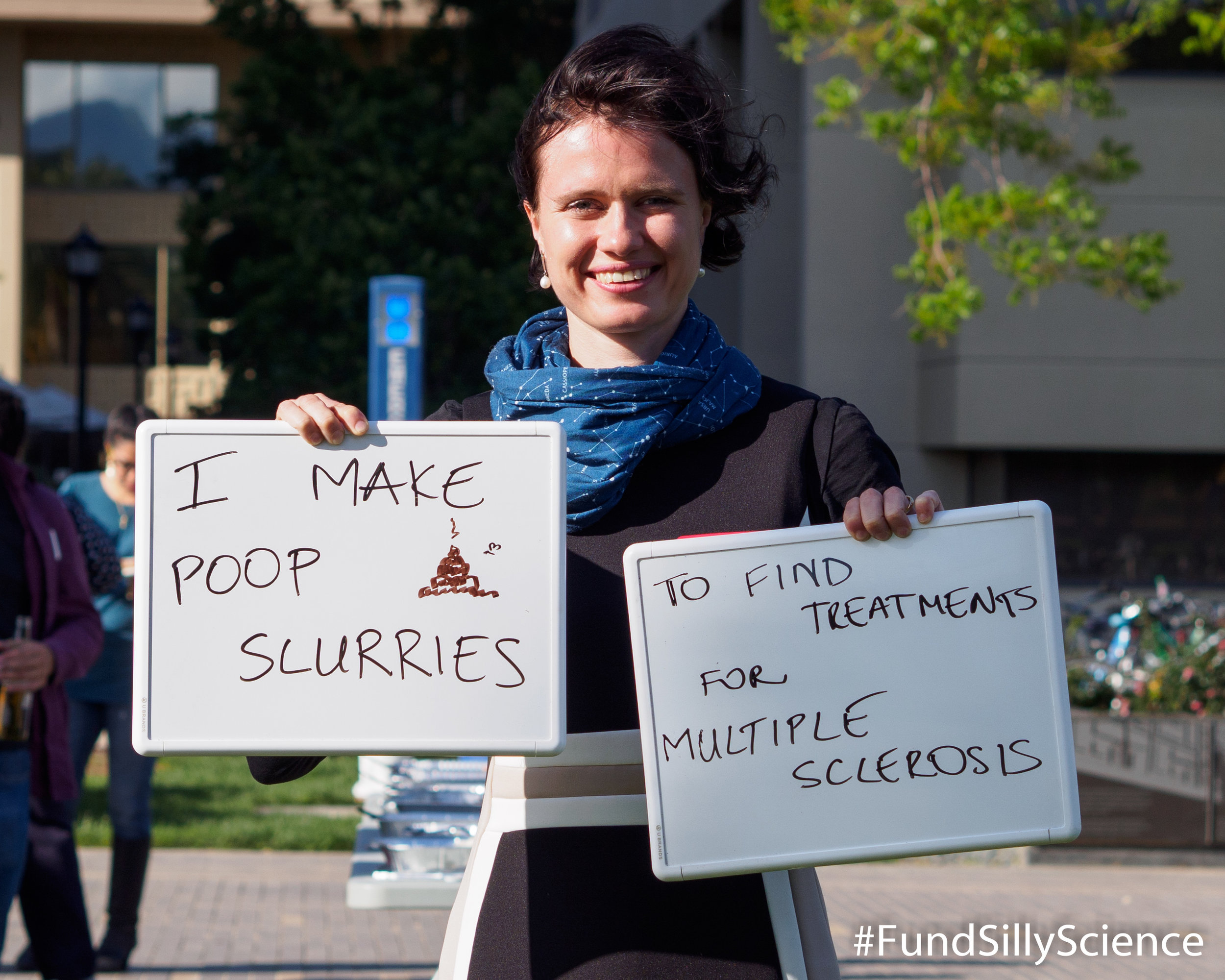
This is Egle, a Stanford PhD alum and current UCSF postdoc. “Gut bacteria affect human health. I collect bacteria from stool samples to find out how they regulate inflammation in multiple sclerosis, which could inspire new treatments of this incurable disease.”

This is Hong, a postdoc at Stanford. “I analyze genomic profiles of cancers to find the culprits underlying tumor growth.”
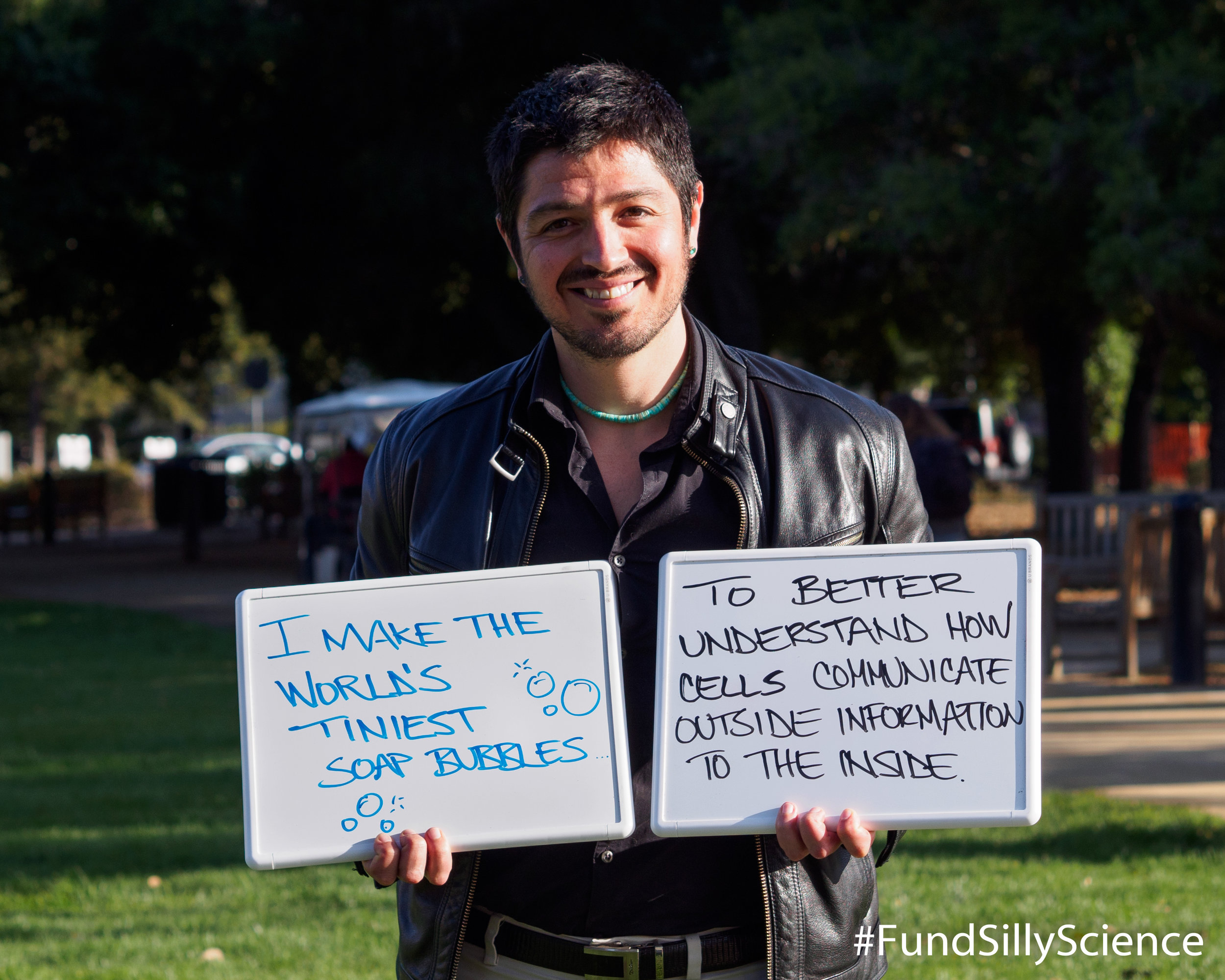
This is Giovanni, a graduate student at Stanford. "Receptors on the surface of cells act as gatekeepers, regulating whether outside signals get transmitted into the cell interior. This kind of signaling is relevant to normal animal development and to cancer (when it goes wrong).”

This is Alka, a post-doc at Stanford. "Touch is vital to how we interact with the world, and losing this sense (as happens to some patients with diabetes) can make life harder and more painful. I study how touch sensitive proteins in neurons convert mechanical pressure into an electrical signal. "
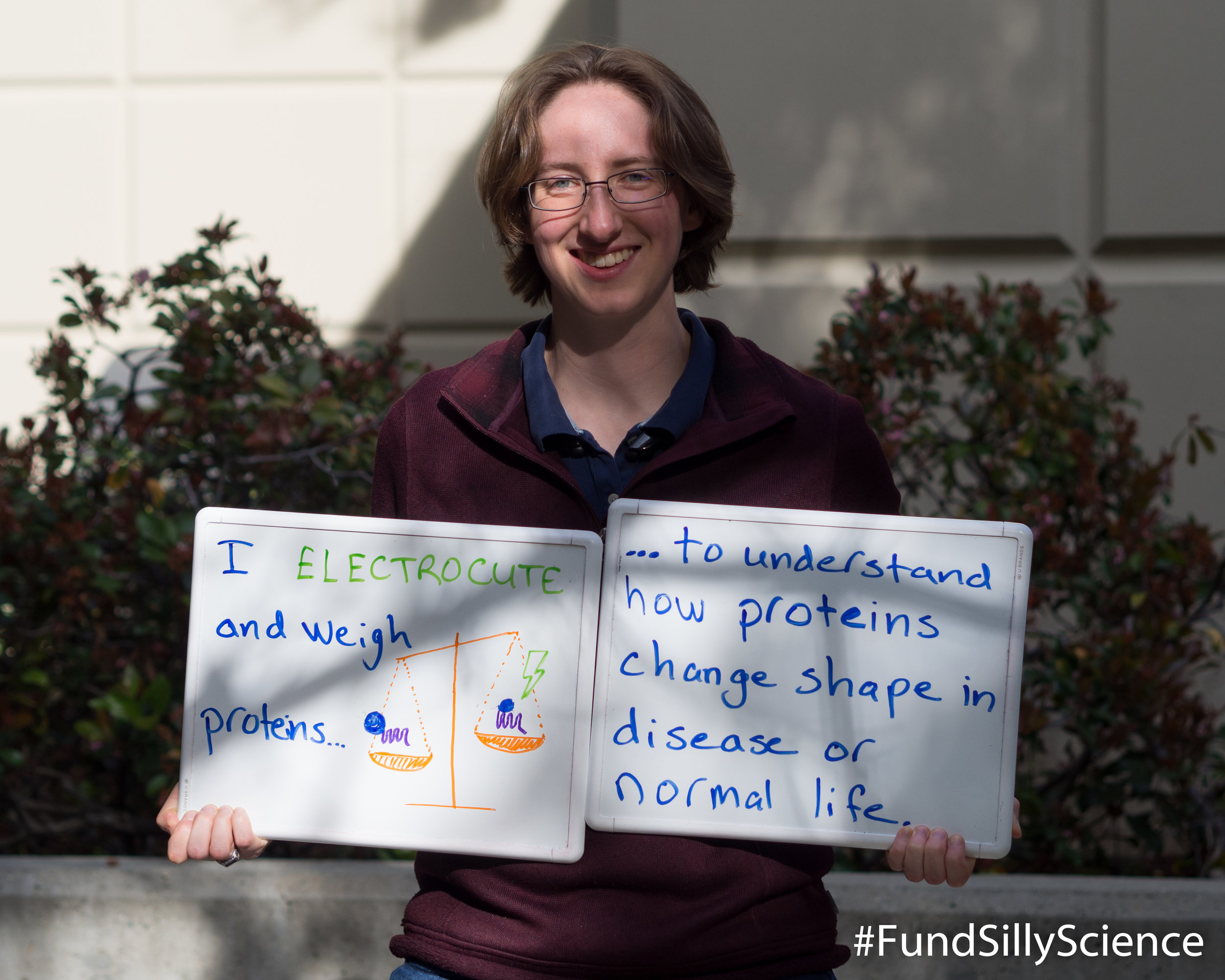
This is Jenna, a grad student at Stanford. "Like a traffic signal switching between red and green lights, proteins change shape to control the chemistry that happens inside cells. I'm developing a new tool that uses mass spectrometry to study those shape changes inside a living cell so that we can understand how those signals lead to normal development and disease."
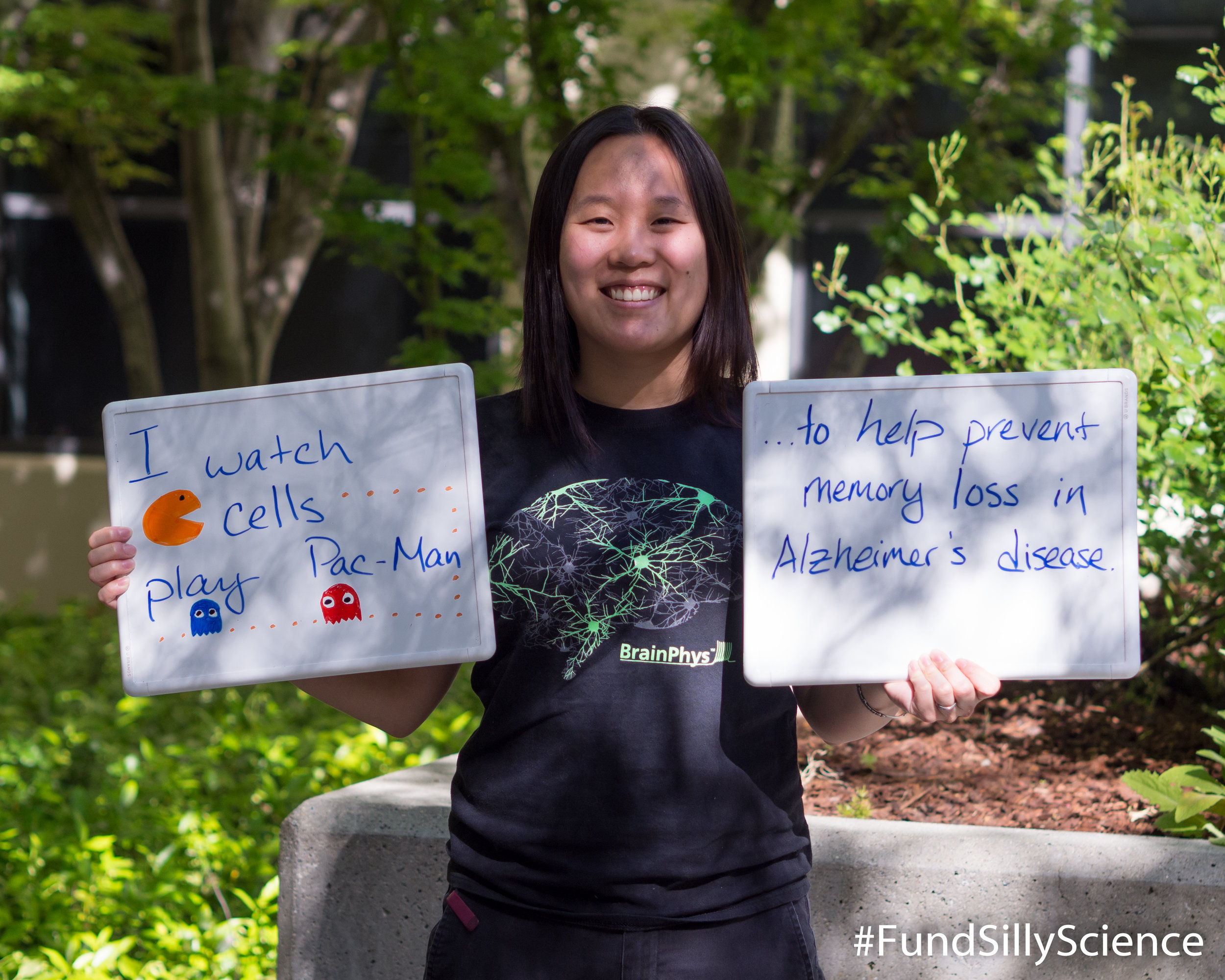
This is Connie, a grad student at Stanford. "Microglia are brain cells that regulate connections between neurons. Studying how they choose which connections to get rid of helps us understand memory loss in Alzheimer's disease."